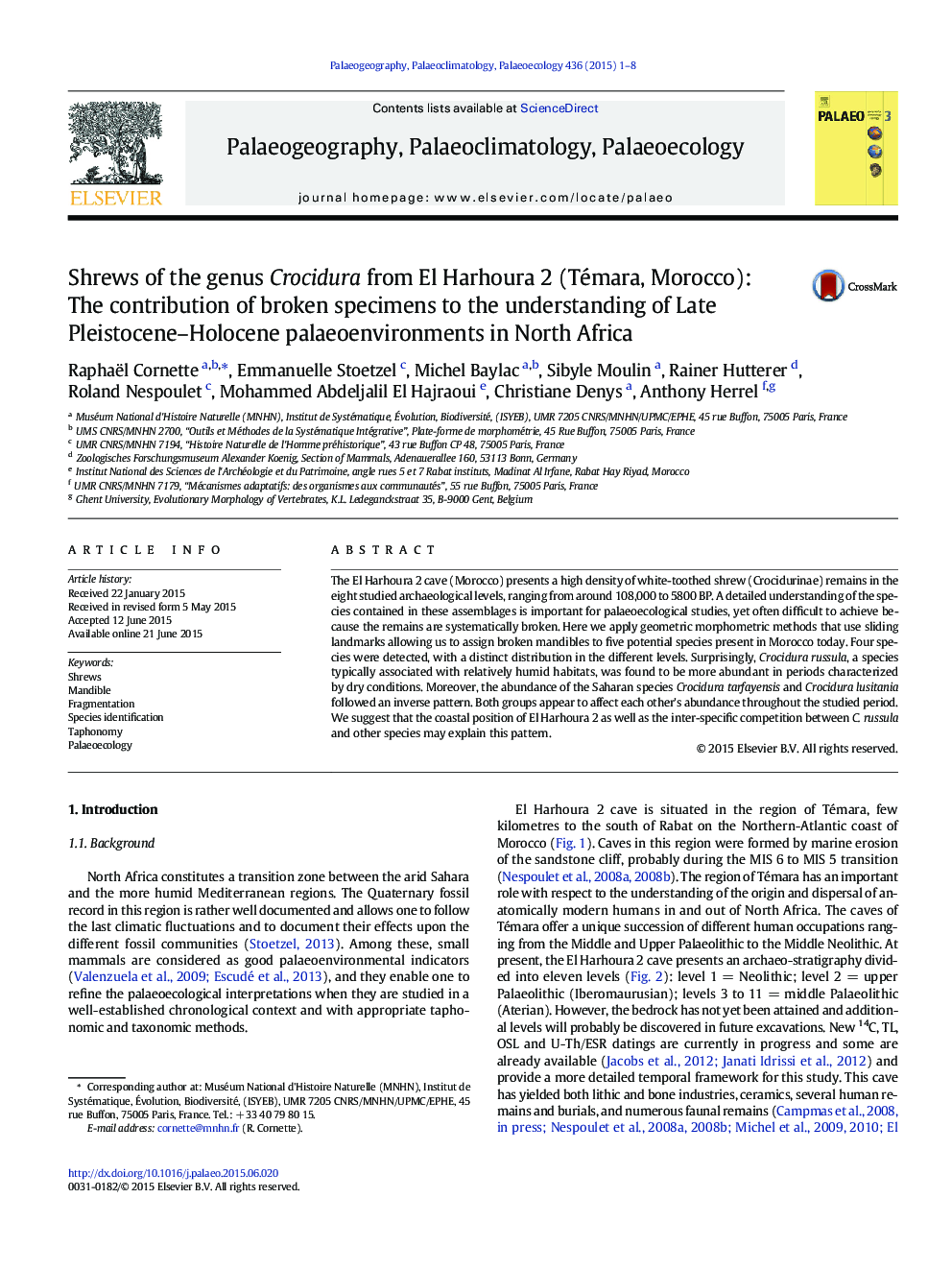| کد مقاله | کد نشریه | سال انتشار | مقاله انگلیسی | نسخه تمام متن |
|---|---|---|---|---|
| 4465891 | 1622154 | 2015 | 8 صفحه PDF | دانلود رایگان |

• Fragmented specimens of archaeological shrew material were studied.
• Species were assigned using modern reference material.
• The faunal composition from 108,000 to 5800 BP is described.
• A palaeoclimatic signal was detected, but in contrast to the a priori hypotheses.
• A palaeoexclusion between some shrew species was demonstrated.
The El Harhoura 2 cave (Morocco) presents a high density of white-toothed shrew (Crocidurinae) remains in the eight studied archaeological levels, ranging from around 108,000 to 5800 BP. A detailed understanding of the species contained in these assemblages is important for palaeoecological studies, yet often difficult to achieve because the remains are systematically broken. Here we apply geometric morphometric methods that use sliding landmarks allowing us to assign broken mandibles to five potential species present in Morocco today. Four species were detected, with a distinct distribution in the different levels. Surprisingly, Crocidura russula, a species typically associated with relatively humid habitats, was found to be more abundant in periods characterized by dry conditions. Moreover, the abundance of the Saharan species Crocidura tarfayensis and Crocidura lusitania followed an inverse pattern. Both groups appear to affect each other's abundance throughout the studied period. We suggest that the coastal position of El Harhoura 2 as well as the inter-specific competition between C. russula and other species may explain this pattern.
Journal: Palaeogeography, Palaeoclimatology, Palaeoecology - Volume 436, 15 October 2015, Pages 1–8